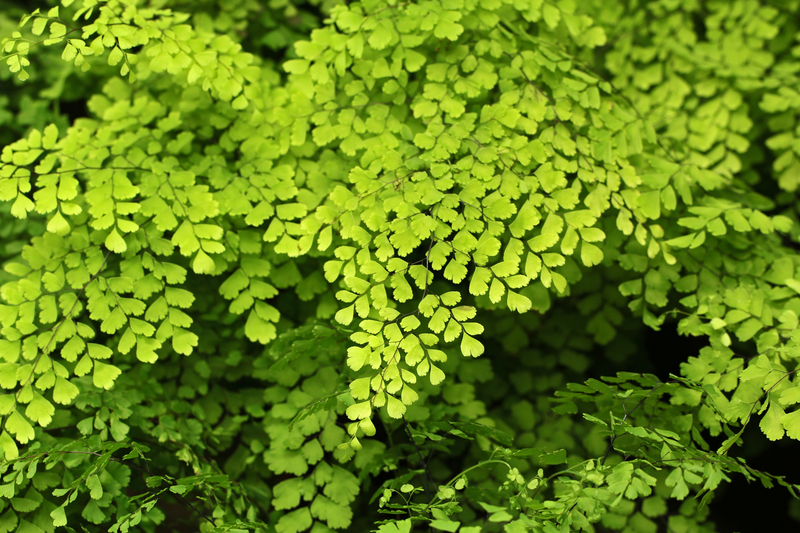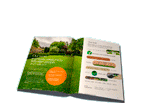Easy Ways to Keep Your Artificial Turf Looking Brand New
Posted on 06/10/2025
Artificial turf has become a popular alternative to natural grass, gracing everything from residential backyards to athletic fields with its evergreen appeal and low maintenance requirements. However, to ensure your synthetic lawn remains lush, vibrant, and inviting for years to come, a few simple but effective care routines must be followed. In this comprehensive guide, you'll discover easy ways to keep your artificial turf looking brand new all year round.
Why Keeping Your Artificial Turf Clean Matters
While synthetic grass is engineered for durability and resilience, it's not completely maintenance-free. Regular upkeep not only preserves the turf's appearance but also prevents bacteria accumulation, extends its lifespan, and enhances overall safety. Adopting a consistent care schedule makes your investment worthwhile and ensures your landscape remains the envy of the neighborhood.

The Basics of Artificial Turf Maintenance
Follow these basic maintenance tips for artificial turf, and you'll enjoy a picture-perfect lawn every season:
- Remove debris such as leaves, twigs, and pet waste promptly.
- Brush the surface regularly to keep fibers upright and prevent matting.
- Rinse the grass with water to remove dust and smaller particles.
- Spot clean stains to prevent permanent discoloration.
- Inspect for damage and repair quickly to maintain the turf's integrity.
Proven and Easy Ways to Keep Artificial Turf Looking Brand New
1. Consistent Debris Removal
The first and perhaps easiest step in maintaining brand-new looking synthetic grass is keeping it free from debris. Fallen leaves, twigs, seeds, and even dust can accumulate over time, promoting weed growth and limiting the permeability of the turf's backing.
- Use a leaf blower, plastic rake, or broom to swiftly clear away leaves and litter.
- Perform this task at least once a week, or more frequently in autumn.
- Avoid using metal rakes or sharp tools, which can damage the turf fibers.
2. Regular Brushing for a Lush Appearance
High-traffic areas may cause the artificial grass blades to flatten. Brushing helps restore their upright position and revives the plush look of your turf. This is especially useful for faux lawns subjected to kids, pets, or frequent foot traffic.
- Invest in a stiff-bristled broom or a specialized turf brush.
- Brush against the grain of the fibers; this helps them stand tall and prevents matting.
- Focus more on regularly used zones like walkways, play spaces, and patios.
3. Effective Rinsing and Washing
Dirt, pollen, and dust can dull the vibrant hue of your artificial grass. Routine rinsing is a simple method to keep it looking fresh.
- Use a garden hose to give your lawn a gentle rinse every 1-2 weeks.
- Pet owners should rinse areas where pets relieve themselves more frequently to prevent odors and bacteria buildup.
- During dry spells, increase rinsing to prevent dust from settling deeply into the fibers.
4. Spot-Cleaning Stains and Spills Immediately
Don't let spills set! Whether it's food, drink, or pet accidents, cleaning up quickly can prevent lasting stains and odors.
- Blot up excess liquids with a paper towel.
- Rinse with clean water and a mild detergent - avoid harsh chemicals that may harm turf color and structure.
- For stubborn stains (like coffee, ketchup, or oil), use a 3% ammonia solution mixed with water for gentle cleaning.
- Never use bleach, as it can discolor and damage the synthetic materials.
5. Managing Pet Waste the Right Way
If you have pets, knowing how to stay on top of waste is key to maintaining that brand-new look and fresh aroma of your artificial turf.
- Pick up solid waste daily with a scooper or disposable gloves.
- Rinse urine spots with water to dilute and flush away residue.
- Use turf-specific enzyme cleaners to tackle any lingering odors.
- Regular brushing also breaks up any compacted areas where pets travel most often.
6. Weed Control to Preserve Appearance
Even though artificial lawns are designed to block weed growth, the occasional weed may sneak through edges or seams.
- Remove visible weeds by hand to prevent them from spreading.
- Apply a water-based weed killer safe for synthetic turf to the affected area.
- Inspect infill and turf backing for gaps or tears that could allow weeds to sprout, and repair them promptly.
7. Preventing and Managing Moss & Algae
Damp, shaded areas are susceptible to moss and algae on artificial grass. This growth not only looks unsightly but can also make the surface slippery.
- Allow sunlight to reach the turf by trimming overhanging branches.
- Use a diluted mixture of vinegar and water to kill moss and algae, followed by a thorough rinse.
- For stubborn cases, purchase a turf-safe moss killer.
8. Avoiding Sharp Objects and Heavy Equipment
Protect your artificial lawn from accidental damage by being mindful of the items and equipment used on its surface.
- Do not place barbecues, fire pits, or heavy furniture directly on the grass - use pavers or pads instead.
- Avoid dragging wheelbarrows, garden tools, or sharp objects across the turf.
- If you're installing holiday decorations, use non-piercing stakes or weights to keep them secure.
9. Maintaining Infill Integrity
The infill in synthetic turf helps blades stand upright and adds cushioning. Over time, infill levels can become uneven, affecting appearance and performance.
- Brush your turf regularly to redistribute infill evenly.
- If low spots develop, top up infill as needed using sand or rubber granules as recommended for your turf type.
- Never overfill - always follow manufacturer recommendations to avoid leaving turf feeling hard or bumpy.
10. Addressing Repairs and Damages Early
Ripples, tears, or seams coming apart are rare but should be addressed as soon as possible to keep your artificial turf pristine.
- Contact your turf installer for advice regarding repairs or use a turf repair kit for minor issues.
- Avoid using adhesives or tapes not designed for synthetic turf patches.
Special Tips for Seasonal Artificial Turf Care
Spring and Summer
- Brush and rinse your lawn more frequently as tree pollen, dust, and increased activity levels accumulate.
- Check the infill after heavy rain and redistribute if necessary.
- Monitor for weed and moss growth as temperatures rise.
Autumn
- Remove fallen leaves promptly to prevent rot and buildup.
- Inspect seams and borders for potential weed entry points after heavy storms.
- Consider an anti-moss treatment if the turf is shaded and wet.
Winter
- Clear snow with a plastic shovel or a soft broom; avoid using salt or de-icing agents that can harm turf fibers.
- Limit foot traffic when the turf is frozen, as rigid fibers can break under pressure.
- Inspect for ice patches and gently remove them to prevent slipping hazards.
Eco-Friendly Artificial Turf Cleaning Solutions
Environmental responsibility is important, even in turf maintenance. Fortunately, you can keep your synthetic grass clean without harming the planet.
- Use natural cleaners like vinegar or mild dish soap diluted in warm water for most stains.
- Purchase enzyme-based turf deodorizers for pet areas - these neutralize odors without harsh chemicals.
- Refrain from using bleach, solvent-based cleaners, or excessive amounts of synthetic fragrances.

Frequently Asked Questions About Artificial Turf Upkeep
Can artificial turf be vacuumed?
It's best to avoid regular household vacuums, as they may disturb the infill. Instead, use a specialized turf vacuum or brush for optimal artificial lawn care.
How long should artificial turf last with proper care?
With correct maintenance, quality synthetic grass can last 15 to 20 years before needing replacement, depending on usage and environmental conditions.
Will pets damage artificial grass?
When maintained properly, pets will not damage your artificial turf. Prompt cleaning, odor management, and regular rinsing ensure the surface remains sanitary and beautiful.
Is artificial turf safe for children?
Yes! Modern artificial lawns are designed to be soft, non-toxic, and allergen-free--making them ideal for play areas, schools, and family backyards.
Conclusion: Enjoying a Brand-New-Looking Artificial Turf Year After Year
Investing just a little time each month in these easy ways to keep your artificial turf looking brand new pays off handsomely. Whether you're using your lawn for sports, relaxation, entertaining, or simply admiring its beauty, regular cleaning, brushing, and conscientious care keep your synthetic lawn as stunning as the day it was installed. Adopt these habits now, and your artificial grass will remain a source of pride and joy for many years to come.
- Remember: Consistent maintenance is key to long-lasting, beautiful artificial grass.
- Use safe cleaners, rinse regularly, and address small issues before they become big problems.
- By following these simple tips, you can enjoy a vibrant, clean, and healthy looking artificial lawn year-round.
Ready to refresh your landscape? Put these artificial turf maintenance tips into action and bask in the beauty of your brand-new-looking artificial grass for seasons to come!





 Certified and experienced landscapers
Certified and experienced landscapers




 Get a Quote
Get a Quote